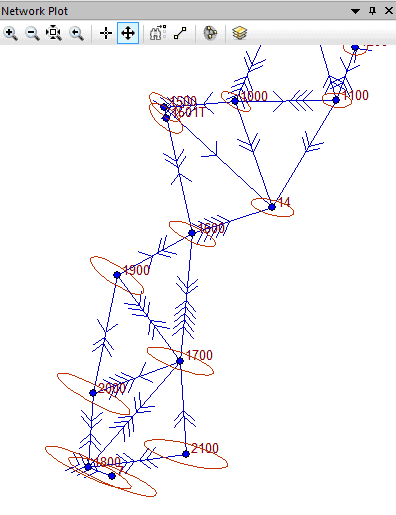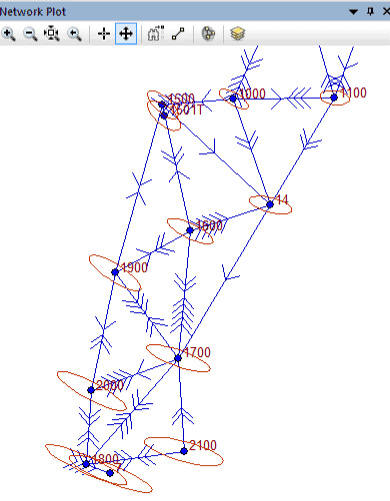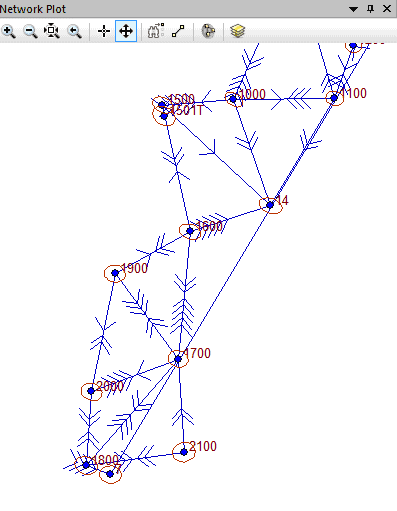Kent McMillan, post: 386447, member: 3 wrote: In Star*Net, the network geometry is represented in the approximate control point coordinates, so all the user needs to do is specify which angles and distances will be measured. Naturally, assigning realistic standard errors to those angles and distances to be measured is essential to getting realistic results.
Thank you. I'm on it.
Kent McMillan, post: 386428, member: 3 wrote: Yes, pre-analysis would be a separate input file.
This is from the manual:
Would you take this to mean I would use the same project file, copy and paste the coordinates into a new .dat file (perhaps from the "adjusted coordinates" output file), then "Pre-Analyze"? Then add additional "observations", adding coordinates if the new points don't currently exist, and repeat?
It'd save a ton of time...I've got 29 points, and 369 observations (although many of those are redundant).
rfc, post: 386461, member: 8882 wrote: This is from the manual:
I assume that that is an "enhancement" in a version of Star*Net after V6. It doesn't particularly make any sense to me to design a "pre-analysis" feature around actual measurements, but that's just me.
The way that pre-analysis should work (in McMillan World) is you begin with an approximate network configuration, verify that a certain number of measurements of given uncertainties will yield results that meet or exceed expectations, and then go do it.
Kent McMillan, post: 386465, member: 3 wrote: I assume that that is an "enhancement" in a version of Star*Net after V6. It doesn't particularly make any sense to me to design a "pre-analysis" feature around actual measurements, but that's just me.
The way that pre-analysis should work (in McMillan World) is you begin with an approximate network configuration, verify that a certain number of measurements of given uncertainties will yield results that meet or exceed expectations, and then go do it.
I understand your point; but this part of the manual seems to specifically target adding on to previously run adjustments, with a view to improve the analysis (like if a surveyor "inherited" a project initially started by another surveyor, I imagine).
It does say it ignores the actual data, which makes sense. In my case, since my network pre-dated version 8 (heck, it predates having ANY version of Star*net!), it should save a ton of work, and since now I want only to strategize on how to improve it, the option seems to make sense. I'll know tonight or so.
Once I know how to use it, I would certainly give it a try per McM W for new work.
rfc, post: 386468, member: 8882 wrote: I understand your point; but this part of the manual seems to specifically target adding on to previously run adjustments, with a view to improve the analysis (like if a surveyor "inherited" a project initially started by another surveyor, I imagine).
It does say it ignores the actual data, which makes sense.
As long as the pre-analysis is using the appropriate standard errors per the .INSTRUMENT inline commands, that should work. If the project has various instruments in use, each with different standard errors, and the pre-analysis is only going to use one set of standard errors, then that won't get very far.
Well, something's not working, or something else is wrong with my data. I added distance observations as suggested; no difference in the ellipses at all. 

So then I suspected that my solitary azimuth (Astro based 500-2) at the very far north end could be propagating any error across the network.
So I added a single line: B 7-2, and voila:

It certainly makes sense that if I can get another astro at the south end, it will help things. Still trying to interpret the ellipses.
Without the additional bearing, I get:
7 0.375077 0.070250 111-59 0.285682
And with it:
7 0.087809 0.068816 97-09 0.285508
The Semi-Major axis (roughly East/West) drops from .375' to .087'.
Of course I can't observe an azimuth between 7 and 2, but I might be able to cut the error almost in half with an astro shot from 1800 to 1700.
Now if I just had one of those Gee-Whiz-Bang-Javad-Boxes-on-a-Stick, well gosh, I'd be stylin'.




